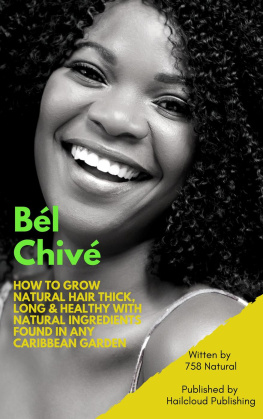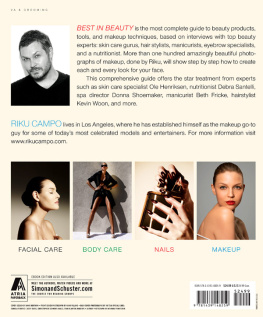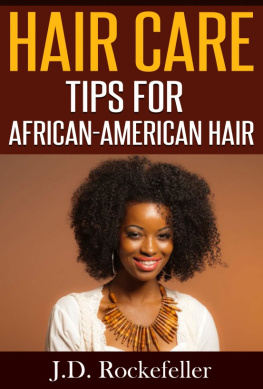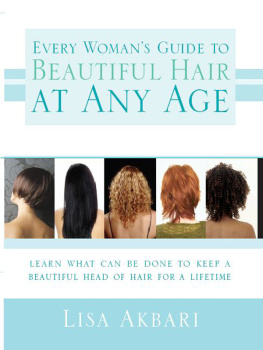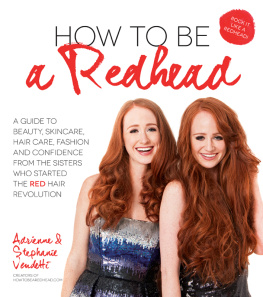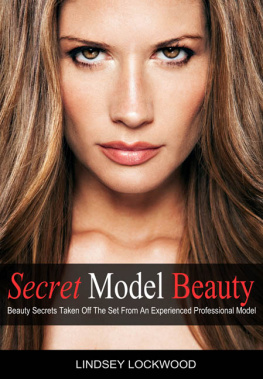Published in 2014 by The Rosen Publishing Group, Inc.
29 East 21st Street, New York, NY 10010
Copyright 2014 by The Rosen Publishing Group, Inc.
First Edition
All rights reserved. No part of this book may be reproduced in any form without permission in writing from the publisher, except by a reviewer.
Library of Congress Cataloging-in-Publication Data
Heos, Bridget.
Getting a job in hair care and makeup/by Bridget Heos.1st ed.
New York: Rosen, 2014
p. cm.(Job basics: getting the job you need)
Includes bibliographical references and index.
ISBN 978-1-4488-9611-0
1. HairdressingVocational guidanceJuvenile literature. 2. Barbering Vocational guidanceJuvenile literature. 3. Beauty operators
Juvenile literature. 4. BarbersJuvenile literature. I. Title.
TT958.H46 2014 646.724 H41
Manufactured in the United States of America
CPSIA Compliance Information: Batch #S13YA: For further information, contact Rosen Publishing, New York, New York, at 1-800-237-9932.
L aurie Ramirez couldnt believe she finally had a job in makeup. She had been practicing since she was a little girl, when she would tape pictures of models to her mirror and copy their makeup to a T. Now it was her first day at an Estee Lauder makeup counter. She was setting out her products when a woman approached the counter wanting a makeover. Laurie could tell what colors would look best on her. She knew how to make her eyes pop" Still, she was nervous. In high school, Laurie had given makeovers to classmates, especially those who needed a pick-me-up. But now it was her job. Did she have what it took to be a professional makeup artist? She performed the makeover and nervously awaited the womans response. When the customer saw herself in the mirror, she was thrilled. She bought many of the products Laurie had used.
Laurie sought additional training through her employer each month and learned as much about the products as she could. Eventually, she went to work for another brand. Then she started her own business. Laurie talked to photographers who shot photos for magazines and advertisement. She did the makeup for the models. She put these photographs in a portfolio to show potential clients. She also built a Web site and Facebook page to show her work. She was referred to new clients by old clients for being talented and professional and a fast worker. Sometimes she worked directly for a client. Other times, she worked for another makeup artist who needed extra help. Soon, Laurie was also doing makeup for television commercials, music videos, fashion shows, and NFL cheerleaders. On weekends, she did makeup for wedding parties.

Makeup artists often get their start at department store counters. They give customers makeovers and sell brand-name products. Customers seek makeup-artists for on-stage or on-air performances, for special events, or for a pick-me up.
She still taped professional photos to the mirror and practiced the makeup. Now, the photos were of models with special effects makeup. Laurie wanted to be able to say yes if clients asked for dramatic or scary makeup. She also thought it was fun to learn new things in her field. She even spent her free time giving her daughter and her friends makeovers.
Laurie learned makeup artistry by practicing at home. Then, she researched available jobs, applied, and attended interviews. Once she landed a job, she worked hard and never stopped learning. When the time was right, she took her career to the next level by starting her own business. These steps may sound overwhelming right now, but by acquiring some basic social and professional skills and following the tips outlined here, you, too, will soon be reporting for work at your dream job, whether thats hair styling, makeup artistry, or a related field.

M any men and women have their hair cut, styled, and colored professionally so there are many jobs available in this field. Starting out, you may be an apprentice or assistant, or a stylist at a salon that hires employees (as opposed to renting booths to stylists). Later, you may work as a senior stylist or manager at a salon, rent your own booth at a salon, or even open your own salon or barbershop. Some hair stylists also specialize in hair styling for magazines, television, movies, or live shows.
State boards of barbering and cosmetology may require apprentice hours in addition to schooling. In Hawaii, for instance, you must apprentice as a hairstylist for forty-two months and as a barber for about a year in order to earn a license. Apprentices work under an experienced hairstylist or barber. They learn the trade while getting paid a modest salary. In some ways, your job will be similar to the assistant position described below. However, youll also get experience cutting and styling hair. If you do a good job as an apprentice, you may be offered a job at the end of your training.
As an assistant, you may work at the front desk, handle retail sales, launder the towels, tidy the booths, and prepare clients for appointments by shampooing their hair. For this reason, the job title is sometimes shampooer. You will likely have daily tasks but will also be on call for whatever the stylists need. Expect to work evenings and weekends, as these are peak times. As an employee, youll earn a minimum hourly wage. If you work directly with clients, youll also earn tips (about 2-8 percent of the hair appointment price for an assistant). If you are a full-time employee, youll likely get health benefits and paid time off (about two weeks total). The salon may also offer a retirement plan.
The assistant tasks described above may not require a hair stylist license. However, many salons will prefer that you have one because they are training you to be a stylist eventually. As an assistant, you can work your way up to stylist within a few months or a few years. On the other hand, if youd like to learn more about the field before going to school, you may consider being a receptionist at a salon. In this position, you would answer the phone, set appointments, greet customers, and handle customer payments.
There are also entry-level jobs for those who want to be a hairstylist right out of school. Many stores that sell beauty products also have a salon. Here, hair stylists often both cut and style hair and also do some retail sales work. This requires a hairstylist license. However, to only sell products, you dont need a license, just an understanding of the products and good people skills. In either position, youll likely work retail hours, including evenings and weekends. You can work your way up to a manager.

Hair stylists need a cosmetology license. They may start work as a hair stylist employed by a salon or as an assistant, or shampooer, at a salon.







